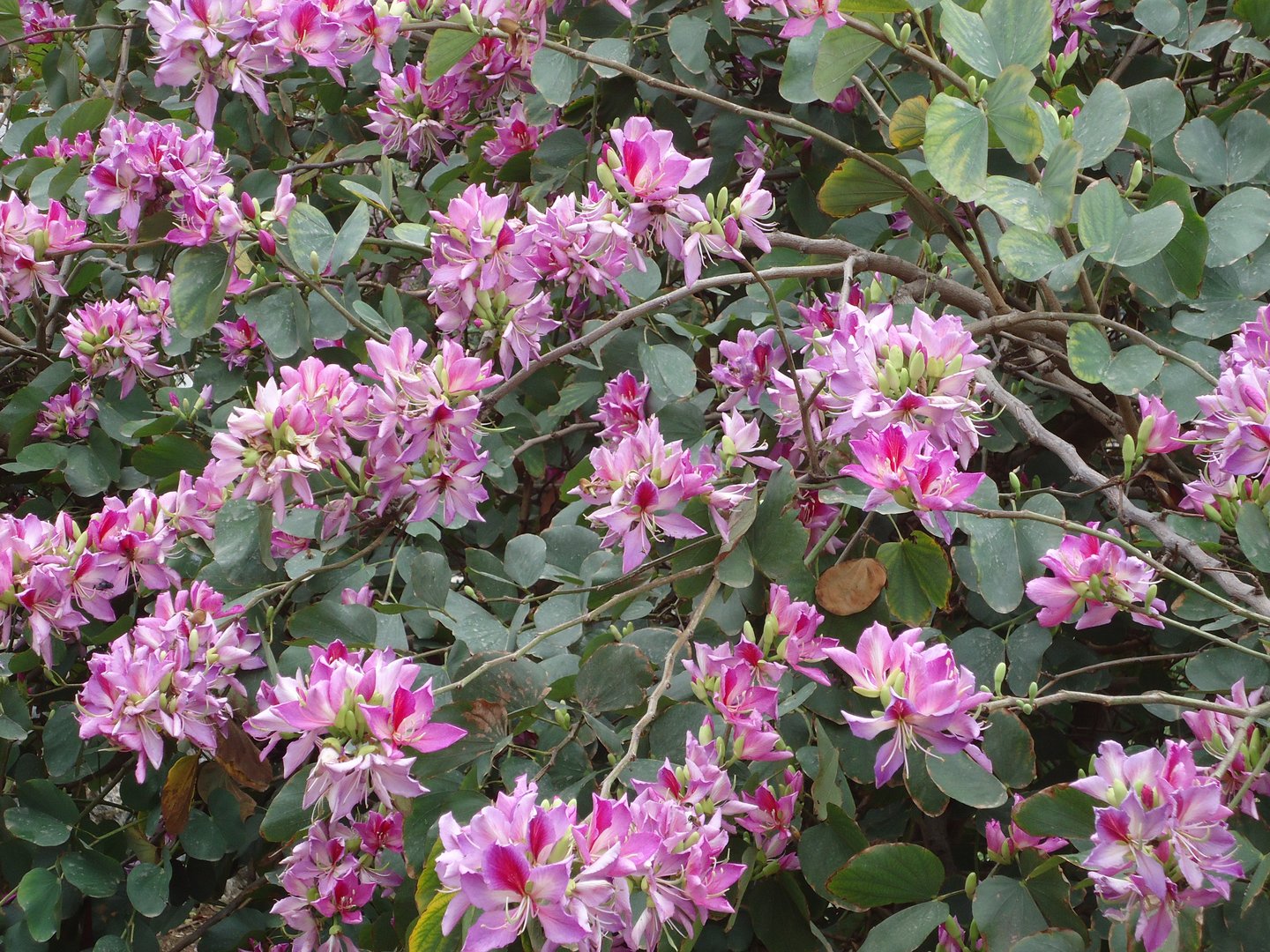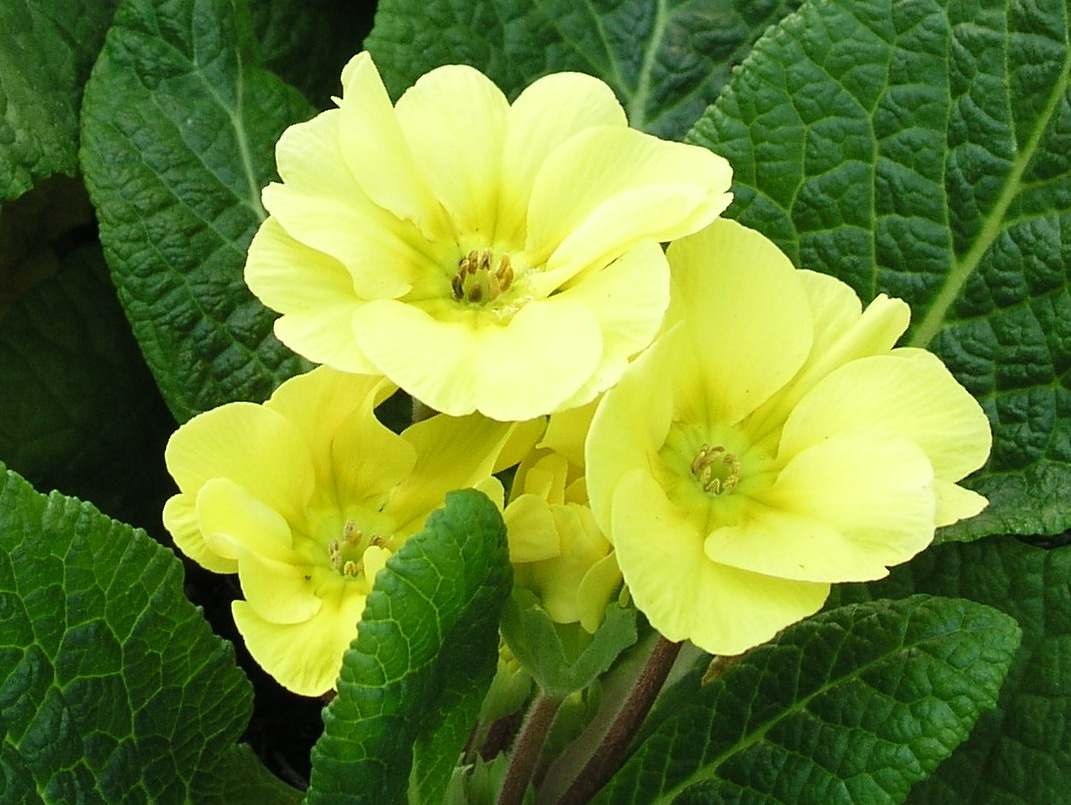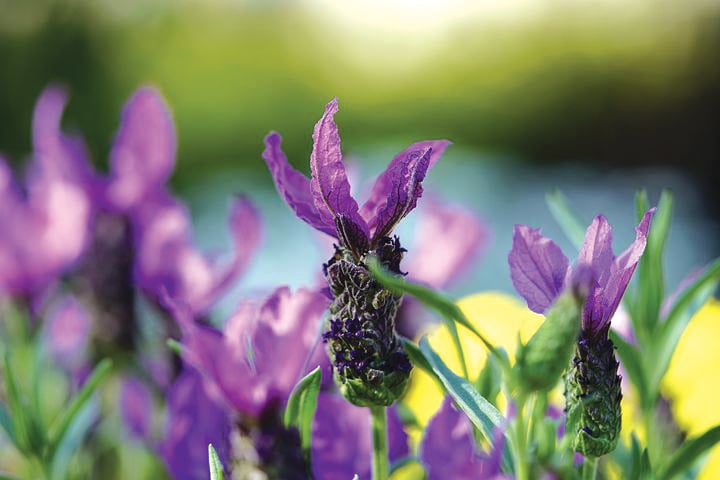April sees new growth and flowers in bloom
I love those old British sayings about the weather – ‘March winds and April showers bring forth May flowers’ and ‘a windy March foretells a fine May’. In Victorian times, April 1st was known as ‘Daffodil Day’, when families would pick daffodils from their gardens and take them to the local hospitals to give to the sick. Sadly nowadays hospitals do not like to have flowers in their wards, but there is nothing like a cheery daffodil to brighten up a patient’s days in hospital.
I am always glad when April arrives after the cold wet winter when we have had several frosts here at 300m and the loss of some of the new growth on the hibiscus hedge. I can put up with that as long as it laid low the dreadful mealy bugs that are a real pain during the warmer days.
Freesias are blooming in gardens everywhere, along with other bulbous flowers and what joy they bring. Along the highways the deep purple flowers of the cercis trees stand out from the green foliage of the other trees, whilst in the city avenues, bauhinia trees are bursting into bloom showering their attractive blossoms over passers-by. These two wonderful trees are perhaps too large for the normal domestic garden but come into their own given space to grow.
April is such a good month for trees. With fresh foliage and wonderful flowers not yet spoiled by too much heat, the island is ablaze with colour and perfume is everywhere. In the orchard citrus blossom is attracting the bees to pollinate the wonderfully scented flowers. Our bay tree has been full of flowers, which also have a wonderful heady scent. Known here as Daphne, these trees are a great asset in the garden as well as in the kitchen. Our mosfilia tree is having a wonderful display of flowers this year after the rest it had last year when we didn’t even have one flower and therefore no fruit for the delicious jelly it can be made into. Roses have put on new growth and some are already in flower in nearby gardens. In fact, some roses never seem to stop blooming throughout the year, although they do benefit from a rest during the cold season.
Climbing up along our veranda railing as well as a bougainvillea, which is sprouting new growths, is a wisteria where the huge, ponderous racemes of light mauve, heavily perfumed flowers hang gracefully down. Wisterias need to be watched as not only do they drop fertile seeds but send out new runners from the base. So unless you want them all over your garden watch out for them to appear and remove them.
One of my favourite plants is the sweet pea ‘Matucana’, a heritage sweet pea with the botanical name of Lathyrus odoratus. It was given an Award of Garden Merit by the Royal Horticultural Society and well deserved too. Sweet peas are amongst the most favourite garden plants grown, certainly in the UK. They are very popular here too, although they bloom much earlier, as our winters are usually much milder, and temperatures warm up faster. Matucana has an intense perfume, much more that present-day varieties. Modern breeding of other lathyrus has given us many different colour combinations suitable for cutting and showing, along with bigger flowers on longer stems.
What to do in the garden this month
Hedges may need a haircut right away, as all that rain we had recently helped to send out new shoots everywhere. The early spring bulbs are over so cut off any dead flower and seed heads but leave the leaves on until they die away completely. If you’re leaving them in the ground feed the plants with a general fertiliser (all the same numbers) so that the leaves and bulb will work at ensuring you have a flower next season. Some people tie the leaves in a loose knot but this breaks the pumping system that feeds the plants and you may end up with blind plants next time. If bulbs have not had flowers this year, then it may be time to dig them up and replant them deeper in the soil – 2-2½ times the depth of the bulb, or store them until the autumn in a dry place. Sometimes, though they have just had their lifespan.
All the sudden warmth means that there are lots of bugs about. Black fly and especially greenfly love soft new growth. Left unchecked the bugs can create untold damage to leaves and flower buds, so deal with them as you spot them. The well-tried remedy is to use a drop of washing up liquid in water and spray often.
Those horrid red beetles, Dionconotus neglectus, have been around chewing my daffodils to death and the only way I have found to deal with them is to shake the flower and stamp on them – the beetles not the flowers. They then move on later to other flowers like irises.
After all the recent heavy rain there may be puddles in which mosquitoes can lay their eggs, so don’t let water stagnate anywhere or you could have masses of young mossies just ready to annoy you. It only takes 10 days from the laying of eggs to the adult flies.
Snails have had a field day this winter and I have seen many more slugs about this year than before. Just keep checking for them under plant trays or plant pot rims where they cluster. You could go out at night with a torch and a bucket to collect them if you feel so inclined.
Summer salad plugs make growing your own so much easier than sowing seeds and waiting for them to appear. Some veggies have to be sown directly in the ground, like beetroot, carrots and peas, but beans come in little plugs to add to our summer menus. Don’t buy plugs if they are dry and crusted, as it is unlikely that they will be able to take up water again. If you cannot plant them straight away, then give them a drink and keep them in the shade until you can. Remember to leave space amongst the rows to let them expand and grow. Sometimes sparrows peck away at lettuce seedlings attracted to the bright green leaves, but as the plants grow, they leave them alone.
Whilst potted polyanthuses are around to cheer us up with their glorious colours, the first roses of the season are bursting into bloom. One of my favourites, Rosa banksia, is looking lovely as it scrambles along a hedge line, and has benefited from being fed from February onwards. The Damascena roses will be next. You may well have had roses flowering in your garden all winter, but they do need a rest period. It is past the time for planting bare root roses, but there are lots of pots of hybrid tea roses around in the garden centres with wonderful colourings and perfumes. Potted roses can suffer from ‘rose replant disorder’ or what is commonly known as ‘rose sickness’. To avoid this, do not plant new roses in spots where they have grown before. Thoroughly dig the area where you want to plant them, adding in any compost before doing so.
Tie in any loose stems of climbing roses and jasmines and take off dead heads as the flowers fade. Other plants that are just glorious at the moment are osteospermums in such a variety of colours. Check them every day whilst the sun is out, so that you only remove the dead heads. If you don’t do this you will be inundated with many seedlings. Give them a feed every three or four weeks. Phostrogen is useful here and a capful in 10 litres of water will feed several plant pots.
Plant of the month Lavendula stoechas
Lavandula stoechas, a fragrant perennial plant, thrives in wild areas in many parts of the world especially southern Europe. These long lasting plants bloom for a very long period and thrive best in poor soil. Known as ‘French lavender’ or sometimes ‘Spanish lavender’, not surprisingly it requires little if any water once it has become established.
The shrubs can reach up to a metre in height and about half that in width, and look splendid when grown as a low hedge. The flowers, which cluster around the top of the stem, can be dark or light purple or even white, and have little bracts protruding from the centre top of the flower head. This lavender seeds prolifically and germinates easily, making it something of a garden thug. The leaves are very narrow and are grey-green in appearance. There are many cultivars of this popular lavender. They are much sought after by bees and butterflies.
Lavender stoechas should be pruned every year after flowering. Trim back the plants then to half their size which will stimulate new growth and make a bushier vibrant plant, which in turn will extend its life.









Click here to change your cookie preferences